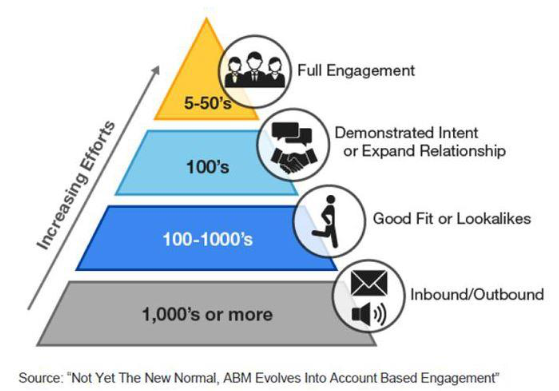What should you consider when marketing with buying intent? Jon Clarke, CEO of Cyance outlines how to enhance inbound and ABM campaigns with B2B intent data.
Enhancing Inbound and ABM Campaigns With Behavioural Intent Data
With only 2-5% of a given audience actively seeking to make a purchase at any given time, it’s increasingly important to consider buying intent to ensure strategies reach and resonate with the right active buyers.
Of course, knowing how close individuals (or specific target accounts) in your audience are to a purchase decision is complex. But thanks to evolutions in technology, it’s now possible to leverage intent-data to create intelligent, buyer behaviour-focussed strategies - and add near real-time insight into inbound and ABM campaigns for greater advantage.
Working to intelligently monitor the digital footprints and engagements left by your target buyers, a behaviour-based, intent-driven approach can not only enhance the efficacy of your marketing and sales campaigns but enable a more targeted, personalised approach; as required in strategies such as account-based marketing.
So what should you consider when including buying intent in your marketing and sales campaigns? Cyance detail key process considerations to make in the steps below.
6 Considerations For Marketing With Buying Intent
1. Adopt a Tiered Approach
It’s important to adopt a tiered approach to help define your total addressable market, based upon current or future value to your business and levels of engagement. The idea is to dedicate the majority of your marketing and sales resources to the audiences and contacts who are most likely to engage.
For example, at the top of the tier will be those who you dedicate most effort and resource toward; the few target buyers or accounts (with ABM) in your audience who show full engagement. Further down are those contacts who have demonstrated intent. Under that, are your good fit/lookalike contacts, and finally, we see those contacts at the inbound level.

2. Create a framework to optimise and scale
Having a framework or structure is important to ensure continued success and growth. With a structured approach, you’ll learn where to optimise your efforts, where to cut ineffective activity and how to identify those who are most likely to buy, faster. It’s a model you can scale and expand across all of your campaigns and should define how you target, monitor, evaluate, qualify, prioritise and engage active buyers.
3. Identify your buyers
Here’s where you research and map the actions, influence and behaviours of the entire decision-making unit for every customer. This way you’ll be able to build a deeper understanding of your DMUs and the individuals within them, and begin to create personas. From here you can build a list of business topics and keywords associated with the various DMU roles and different buying stages, and target the right people when those topics are trending.
4. Identify your active market
Behaviour and buying intent focussed marketing allows you to target those precise individuals - that tiny 2-5% of your audience who are showing current, active buying signals. It works using a Context-Timing-Relevance approach:
- Context helps you ensure the accuracy of the signals you pick up - distinguishing positive from negative, determining influence, revealing intent and more.
- Timing is about gathering insights in real time and reacting to buying signals as soon as you spot them.
- Together, Context and Timing help you prioritise targets, so you can tailor your approach and messaging, giving it Relevance.
5. Build Your Keyword Strategy
A keyword strategy is crucial when it comes to identifying intent. Build your keywords according to the relevant behaviour topics for each stage of the buying cycle:
- Awareness: keywords should reflect customer needs and pain points
- Consideration: include keywords relevant to solving their challenges
- Decision: include the names of your products and your competitors
6. Get personal
According to a Cyance and B2B Marketing survey, over three quarters (76%) of marketers rate the ability to personalise marketing messages as ‘important’ or ‘very important’. Today you can go far beyond simply using names, job titles and companies in your creative copy. With buying intent focussed technology, you can personalise right down to what each prospect is interested in, who they are talking to about it and why - and all in real time, right here and now.
Transforming Campaigns With Intent Insight
In a nutshell, effective behaviour-focussed marketing uses predictive analytics, AI and machine learning to make sense of all available data; to filter out noise; identify (in real time) the prospects with intent to buy; target them with laser precision; determine the messaging that will engage and convert them, and nurture and track every stage of the journey.
With leads qualified with the level of insight that buying insight can provide, marketing and sales campaigns - from inbound to demand gen to ABM programme development - can be considerably more effective, relevant and personalised to the right active accounts at the right time - a substantial competitive advantage.
Image courtesy Cyance. Parts of this post were originally published here.






